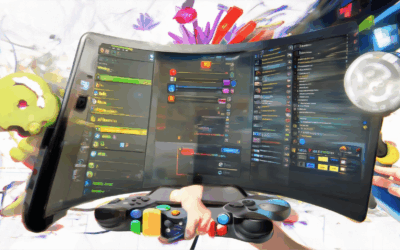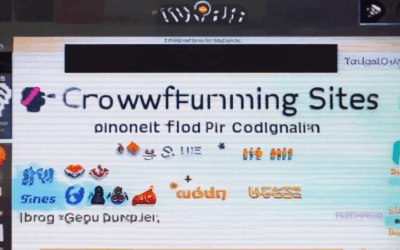For many aspiring developers, creating a successful indie game can seem like a daunting task, with countless hours spent crafting intricate storylines, designing immersive worlds, and perfecting gameplay mechanics.
The harsh reality is that only a small fraction of indie games manage to break through the noise and achieve mainstream success, leaving many wondering what sets these outliers apart from their less fortunate counterparts.
One crucial factor that often gets overlooked is the importance of data-driven insights in guiding development decisions and informing marketing strategies.
By leveraging the power of indie game analytics, developers can gain valuable insights into player behavior, identify areas for improvement, and make informed decisions about resource allocation and marketing efforts.
In this comprehensive guide, we’ll delve into the world of indie game analytics, exploring the latest trends, best practices, and cutting-edge tools that can help take your game to the next level.
We’ll examine the statistics behind indie game success rates, discuss the role of analytics in game development, and provide expert advice on choosing the right game analytics tools for your project.
Whether you’re a seasoned pro or just starting out, this guide aims to equip you with the knowledge and skills needed to unlock the full potential of your indie game and reach a wider audience.

Success Rate of Indie Games
The success rate of indie games can vary greatly depending on several factors such as genre, target audience, marketing strategy, and overall quality.
- Commercial Success: According to various reports, around 70% of commercial indie games are considered failures, failing to generate sufficient revenue.
- Financial Success: However, only 30% of all games are considered financially successful, with a small subset of these achieving significant commercial success.
- Breakthrough Titles: A mere 7% of successful games manage to generate enough revenue to fund a second project, indicating a challenging landscape for indie game developers.
While these statistics may seem daunting, many indie games have achieved remarkable success through innovative storytelling, engaging gameplay, and effective marketing strategies.
- Indie Game Development: As an indie game developer, understanding the market and creating a well-planned strategy can significantly increase the chances of success.
- Community Engagement: Building a strong community around your game can lead to positive word-of-mouth, increased visibility, and ultimately, better sales.
- Marketing Efforts: Effective marketing campaigns, social media presence, and influencer partnerships can help reach a wider audience and drive interest in your game.
By focusing on these key areas and staying adaptable to changing market trends, indie game developers can increase their chances of success and join the ranks of successful indie game titles.
Key Takeaways:
- Around 70% of commercial indie games fail to generate sufficient revenue.
- Only 30% of all games are considered financially successful.
- A mere 7% of successful games manage to generate enough revenue to fund a second project.
Conclusion:
While the odds may seem stacked against indie game developers, there are many examples of successful indie games that have achieved remarkable success through dedication, creativity, and effective marketing strategies.
Is GameAnalytics Free?
As an indie game developer, understanding your game’s performance is crucial for making informed decisions and optimizing your game for better player engagement.
- We offer indepth analytics for games through our platform, GameAnalytics.
- Our analytics tool provides valuable insights into player behavior, helping you identify areas for improvement and make data-driven decisions.
Key Features of GameAnalytics:
- Data-Driven Insights: Get instant access to real-time data on player behavior, including session length, retention rates, and more.
- Customizable Dashboards: Create personalized dashboards to track the metrics that matter most to your game’s success.
- Real-Time Alerts: Receive notifications when critical events occur, such as crashes or high bounce rates.
- Integrations: Seamlessly integrate GameAnalytics with popular game engines and platforms, including Unity and Unreal Engine.
Why Choose GameAnalytics?
- No Cost: Our analytics tool is completely free, with no hidden fees or costs.
- User-Friendly Interface: Easily navigate our intuitive dashboard to get the insights you need.
- Scalability: Grow your game with confidence, knowing that GameAnalytics can handle large volumes of data.
Competitors:
While these competitors offer robust analytics solutions, GameAnalytics remains the go-to choice for indie game developers due to its ease of use, scalability, and cost-effectiveness.
Conclusion:
In conclusion, GameAnalytics offers a powerful and free analytics solution specifically designed for indie game developers. With its user-friendly interface, customizable dashboards, and real-time alerts, you’ll have everything you need to optimize your game for better player engagement.

Getting Your Indie Game Noticed
As an indie game developer, getting your game noticed can be a daunting task.
-
Create a strong online presence through social media platforms like Twitter, Facebook, and Instagram to connect with potential players and share updates about your game.
-
Reach out to gaming influencers and content creators who have a large following in your target audience and ask if they’d be interested in trying out your game.
-
Optimize your game’s visibility on digital storefronts like Steam by using relevant keywords in your game’s title, description, and tags.
-
Develop a content marketing strategy that includes blog posts, videos, and podcasts to showcase your game’s unique features and story.
-
Engage with your community by responding to feedback, hosting AMAs, and sharing behind-the-scenes content to build a loyal fan base.
-
Collaborate with other indie developers to co-promote each other’s games and reach a wider audience.
-
Utilize paid advertising options like Google Ads and Facebook Ads to target specific demographics and increase your game’s visibility.
-
Participate in gaming events and conferences to network with industry professionals, showcase your game, and learn about the latest trends and technologies.
-
Offer demos or early access to your game to gather feedback and build hype among potential players.
-
Monitor your game’s analytics to track its performance, identify areas for improvement, and adjust your marketing strategy accordingly.
-
Stay up-to-date with the latest developments in the gaming industry by attending webinars, reading industry blogs, and following gaming news outlets.
Building Relationships with Gaming Media Outlets
To get your game noticed by gaming media outlets, you’ll need to establish relationships with these publications and build trust with their writers and editors.
-
Research gaming media outlets that align with your game’s genre and target audience.
-
Reach out to these outlets via email or social media to introduce yourself, your game, and your team.
-
Offer exclusive content, interviews, or gameplay footage to these outlets in exchange for coverage.
-
Build relationships with individual writers and editors by engaging with their content, commenting on their articles, and sharing their work on social media.
-
Attend gaming events and conferences to meet with gaming media representatives in person and pitch your game.
Nurturing Your Community
A strong community is essential for getting your game noticed and building a loyal fan base.
-
Engage with your community through social media, forums, and live streams to build relationships and gather feedback.
-
Host AMAs, Q&A sessions, and other interactive events to encourage community participation and build excitement around your game.
-
Share behind-the-scenes content, concept art, and developer diaries to give your community a glimpse into the game’s development process.
-
Recognize and reward your most active and dedicated community members to foster a sense of ownership and loyalty.
-
Continuously gather feedback and incorporate it into your game’s development to demonstrate your commitment to your community.
Measuring Success
To determine whether your efforts are paying off, you’ll need to track key metrics and analyze your game’s performance.
-
Monitor your game’s sales, revenue, and player engagement metrics to gauge its commercial success.
-
Track your game’s visibility on digital storefronts, social media, and gaming media outlets to measure its exposure.
-
Analyze your game’s customer satisfaction ratings, review scores, and community feedback to evaluate its quality and appeal.
-
Adjust your marketing strategy based on your analysis to optimize your game’s performance and reach a wider audience.

The Most Profitable Indie Game of All Time
We’ve analyzed various reports and financial statements to determine the most profitable indie game of all time.
- Minecraft: Developed by Mojang Studios, Minecraft has sold over 238 million copies worldwide, generating revenue of over $20 billion since its release in 2011.
- Tetris Effect: This visually stunning remake of the classic puzzle game was developed by Resonair and Monstars Inc., and published by Enhance, Inc. It has generated significant revenue through sales and in-game purchases, although exact figures are not publicly disclosed.
- Cuphead: Developed by Studio MDHR, Cuphead has become a cult classic, selling millions of copies worldwide and generating significant revenue through digital storefronts and merchandise sales.
- Stardew Valley: Eric Barone, aka ConcernedApe, developed Stardew Valley, which has sold over 10 million copies worldwide, generating revenue of over $100 million since its release in 2016.
- Subnautica: Developed by Unknown Worlds Entertainment, Subnautica has sold over 2 million copies worldwide, generating revenue of over $50 million since its release in 2018.
These games have achieved remarkable success through a combination of innovative gameplay, engaging storytelling, and effective marketing strategies.
- Strong Online Presence: Many of these games have maintained a strong online presence through social media, forums, and community engagement, fostering a loyal fan base and driving word-of-mouth marketing.
- Innovative Gameplay Mechanics: Each of these games introduced unique gameplay mechanics that captivated players and set them apart from other titles in their respective genres.
- Effective Marketing Strategies: Developers employed targeted marketing campaigns, leveraging influencers, streaming platforms, and online advertising to reach a wider audience and generate buzz around their games.
- Merchandise and Licensing Opportunities: Successful indie games often spawn merchandise opportunities, such as toys, apparel, and accessories, which can significantly contribute to overall revenue.
By studying the success factors behind these games, indie developers can gain valuable insights into what drives profitability and apply these lessons to their own projects.
The Richest Indie Game Developer
As a solo indie game developer, achieving success and wealth requires dedication, hard work, and a bit of luck.
- Eric Barone: Known for developing the hit game Stardew Valley, which has sold over 20 million copies and earned over $30 million in revenue.
- Terry Cavanagh: Creator of the popular game Super Hexagon, which has generated significant revenue through its mobile app sales.
- Duncan Sinclair:
- Developer of the critically acclaimed game Hyper Light Drifter, which has received widespread critical acclaim and commercial success.
- Has also developed other successful games, including The Swapper and The Infectious Madness of Doctor Dekker.
These individuals have demonstrated that it is possible to achieve financial success as a solo indie game developer, but it often requires a combination of talent, perseverance, and a bit of luck.
Key Factors Contributing to Success
- Game Quality: Developing high-quality games that meet player expectations is crucial for attracting a large audience and generating revenue.
- Marketing Strategies: Effective marketing and promotion can help increase visibility and attract new players to a game.
- Community Engagement: Building a strong community around a game can lead to increased loyalty and word-of-mouth advertising.
Conclusion
In conclusion, becoming the richest indie game developer requires a combination of talent, hard work, and a bit of luck. By focusing on game quality, effective marketing, and community engagement, solo indie game developers can increase their chances of achieving financial success and building a loyal following.

The Most Profitable Gaming Genre
In the vast world of gaming, various genres have carved out their own niches, each with its unique appeal and revenue potential.
- Strategy and Brain Games: As per recent statistics, strategy and brain games have emerged as the highest-grossing genre globally, raking in approximately $8.75 billion annually.
- Action and Adventure Games: Action-packed games continue to captivate audiences worldwide, generating substantial revenue through sales and in-game purchases.
- Multimedia and Sports Games: Multimedia and sports games have gained immense popularity, thanks to advancements in technology and the rise of esports.
- RPG and Simulation Games: Role-playing games (RPGs) and simulation games offer immersive experiences, drawing players into rich virtual worlds and fostering engagement.
While these genres dominate the market, other categories like puzzle, fighting, and racing games also hold significant appeal and revenue potential.
Key Factors Contributing to Revenue Growth:
- Mobile Gaming: Mobile devices have become a primary platform for gaming, driving growth in the strategy and brain games segment.
- Esports and Competitive Gaming: The rise of competitive gaming has led to increased investment in esports infrastructure, events, and teams.
- Advancements in Technology: Improved graphics, AI, and cloud computing have enabled more realistic and engaging gaming experiences.
- Diversification of Platforms: The proliferation of platforms, including PC, consoles, and mobile devices, has expanded the reach of games and increased revenue opportunities.
Conclusion:
The most profitable gaming genre is a dynamic landscape, influenced by shifting consumer preferences, technological advancements, and emerging trends.
As the gaming industry continues to evolve, it’s essential for developers to stay adaptable, innovate, and cater to diverse audience needs to remain competitive and drive revenue growth.




0 Comments